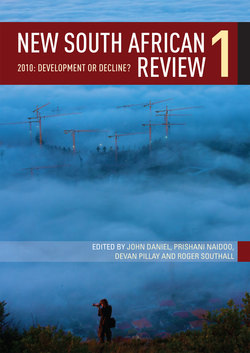Читать книгу New South African Review 1 - Anthony Butler - Страница 34
CHAPTER 3 The economic impact of South Africa’s 2010 World Cup: Ex ante ambitions and possible ex post realities
ОглавлениеScarlett Cornelissen
The significance of South Africa’s hosting of the nineteenth Fédération Internationale de Football Association (FIFA) World Cup in mid-2010 extended far beyond the fact that it would be the first time that this mega-event would be hosted on the African continent. It was rather that the World Cup, because of its size and the capital investments that were required to host it, held a number of long-term implications for economic and social development in South Africa. Over the years many expectations had been raised by the country’s leaders of the event’s effects on employment and growth; concomitantly, extensive financial commitments had already been made by public authorities. The central question is therefore how such investments and the infrastructural developments that were undertaken for the World Cup were consonant with broader economic processes in the country, and what the legacies of the tournament would be for South Africa’s political economy. What lessons, in this regard, could be taken from similar sport mega-events hosted in other locations? This chapter evaluates the ex ante projections and potential ex post impacts of the tournament against the practices, experiences and principles derived from the study of sport mega-events in other parts of the world. It reviews the main economic and sectoral changes that have been made in recent years for the hosting of the World Cup and considers what some of their long-term economic legacies – and their related socio-political fall-outs – may be.
The first part of the chapter is conceptual in nature. It contextualises both the nature and the economic dimensions of sport mega-events in the contemporary era and reviews the varied legacies – infrastructural, economic and sectoral – of such events. It gives an overview of the various scholarly perspectives on the measurement of impact and considers some of the methodological and other drawbacks in established impact assessment practice. The second part of the chapter reviews the projections that have been made about the 2010 World Cup’s likely impacts and the macroeconomic, infrastructural and sectoral investments which were undertaken. A concluding section considers some of the principal prospects and challenges that the World Cup posed for South Africa.
